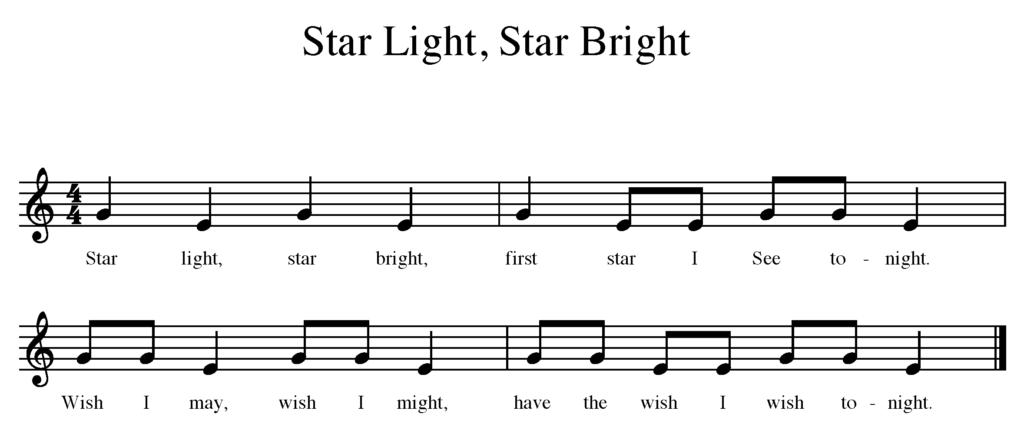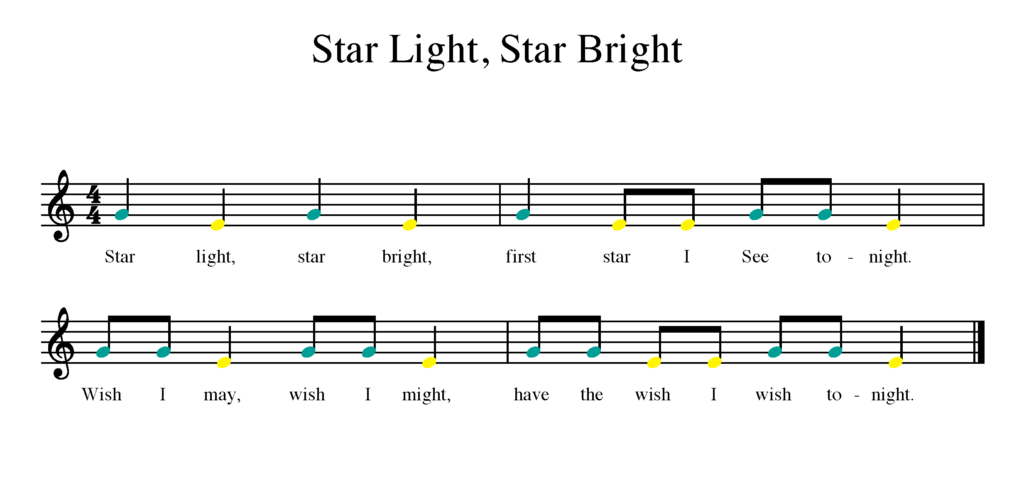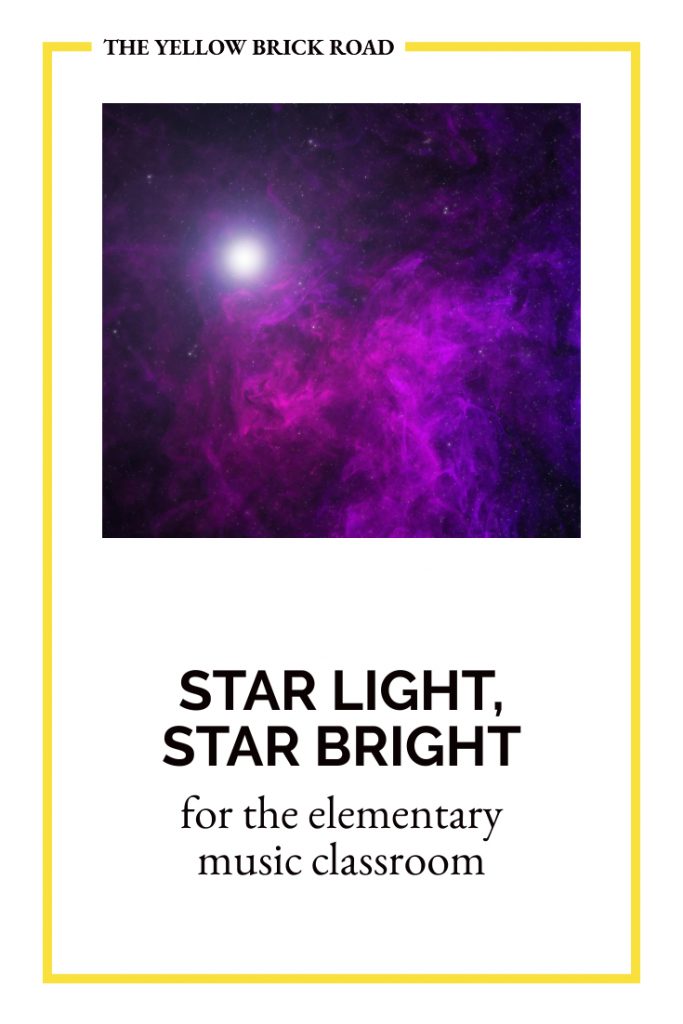Star Light, Star Bright is a great folk song to use in introducing and practicing with Orff instruments in the elementary music classroom. To start, students should already know how to sing the song independently before transferring their knowledge to an instrument.
When a song, such as Star Light, Star Bright, doesn’t have a traditional accompanying movement, it’s beneficial to make up movements with the help of your students. This is preferable for three reasons; it gives students more ownership of their learning, movement makes everything better, and they have the opportunity to flex their imagination (the true work of childhood).
EXPLORATIONS & WARMUPS
Once your students can sing and move to the song independently, it’s time to play the instruments. Here’s a handy video showing Orff instrument procedure. Once students are at their instruments with mallets in hand, allow them a few minutes to explore their instruments. In this case, to explore means to “play anything they want that doesn’t hurt their instrument or the ears of the person next to them”. Depending on how loud this will get, you may ask them to turn their mallets around and use the handles to soften the sound. Once they’ve explored independently, you can move on to some simple warm-ups. Here are a few ideas:
GLISSANDOS
- Ask students to glissando high. As a reminder, you can tilt your instrument up, so that the high bars face the ceiling (it looks like a mountain). Then, demonstrate the glissando. This is also a quick way to assess whether your students know high/low on Orff instruments. Plus, who doesn’t love playing a glissando?
SHORT & LONG
- Call on a volunteer to choose a note to play. Once everyone has located that bar, have them echo you with short and long sounds. It’s a good idea to keep this entertaining by playing as quickly as you can (or as slowly as you can) and see how the students keep up.
ALTERNATING HANDS
- Any warm-up should pertain to the piece students will be playing, so working on alternating hands is important. Ask students to “walk their mallets” on G and E with you using a steady beat. Once they master this, they’re only a few steps away from playing the song Star Light, Star Bright in its entirety.
NOTATION
If you do choose to introduce notation at this stage, it’s a good idea to have some different visuals available, such as colored notation. Not only will this help students with visual tracking, but it’s also handy for transferring to other instruments, such as Boomwhackers™.
If you’re interested in using Orff instruments with your students, but not sure how to begin, preview my Star Light, Star Bright Guided Orff Activity to see if it would be a good fit for your classroom.




2 Responses
I use this song quite often for sol-mi and some intro to instruments as well. Your ideas on the procedures from instruments are really useful. I never thought to tilt the instrument on its side.
I like to practice rolls at different dynamics as well, starting soft and getting gradually louder from a hand cue. Kids love a good finale too!
Ooh, yes! I love the idea of changing the dynamics 🙂